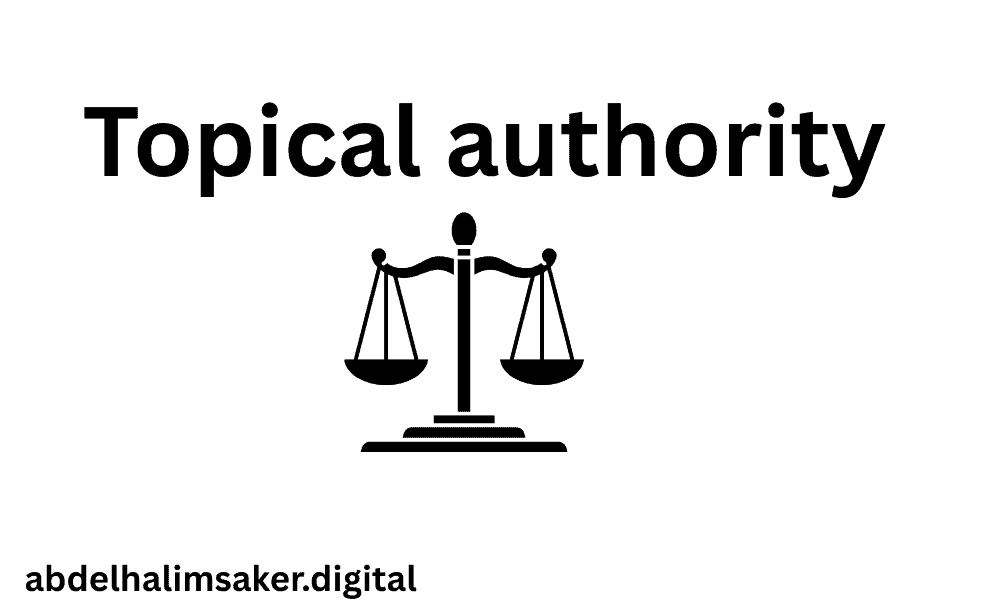
Topical Authority is the depth, trustworthiness, and consistency of content coverage across semantically related entities. It signals how well a website demonstrates expertise within a specific topic ecosystem. A site with high topical authority doesn’t just mention a keyword; it provides contextual completeness — answering all relevant queries connected to that topic through strong internal semantics and knowledge-based relationships.
Search engines evaluate authority by analyzing content coverage, entity coherence, and user validation signals.
Evolution of Authority Signals in SEO
How did Topical Authority replace Domain Authority?
Earlier, Domain Authority (DA) and PageRank quantified trust based on backlinks. These metrics measured link popularity, not topic expertise. As search engines advanced, Google began valuing semantic depth over link volume.
From Link-Based to Context-Based Trust
| Era | Dominant Signal | Limitation | Modern Equivalent |
|---|---|---|---|
| 2000–2010 | Backlink Count | Manipulable | Entity Credibility |
| 2010–2018 | Domain Authority | Generalized | Topical Authority |
| 2018–Present | Contextual Signals | Granular, entity-driven | Knowledge Graph Validation |
Google’s EEAT framework (Expertise, Experience, Authoritativeness, Trustworthiness) reinforced this shift. Instead of ranking a site because of its domain power, Google evaluates author expertise, content accuracy, and entity consistency across all pages related to a topic.
Knowledge Graph validation confirms whether a brand, author, or concept is recognized as a credible entity within that domain. The more semantically coherent and interlinked your content, the higher your topical authority vector becomes within Google’s entity space.
How Google Measures Topical Authority
What algorithmic signals indicate Topical Authority?
Google uses a mix of contextual coverage, query co-occurrence, entity relationships, and behavioral data. These factors together create an authority pattern that represents both depth and trust.
| Signal | Definition | Impact on Authority |
|---|---|---|
| Query Co-occurrence | Frequency of related query matches | Validates topical alignment |
| Contextual Coverage | Breadth of subtopic inclusion | Reflects depth and completeness |
| Entity Relationships | Strength of links between entities | Confirms semantic structure |
| Engagement Metrics | Dwell time, CTR, return visits | Shows behavioral trust |
Google infers expert validation when multiple semantically linked queries from different users lead to similar entities or domains.
Historical Data and Positive Engagement
What is behavioral validation?
Behavioral validation occurs when user engagement consistently signals satisfaction. Positive user actions — such as longer dwell time, low bounce rates, repeat visits, and content sharing — strengthen Google’s belief that the content answers intent correctly.
A site with sustained engagement gains behavioral authority weight, reinforcing its trust profile over time.
Query Path Reinforcement
How do multiple related queries build trust?
When users repeatedly search for related questions (e.g., “What is topical authority?” → “How to build topical authority?” → “Topical authority examples”) and interact with the same site, Google maps this behavior as a query path.
That repeated association strengthens the site’s topical connection.
This process is known as query path reinforcement — an implicit trust signal that reflects consistent query satisfaction.
How to Build Topical Authority Step by Step
How can a site develop high topical authority?
Topical Authority builds progressively through structured content sequencing, semantic internal linking, and entity-based expansion.
1. Define the Core and Outer Structure
| Layer | Purpose | Example |
|---|---|---|
| Core Section | Main entity and its direct subtopics | “Semantic SEO,” “Topical Authority,” “Knowledge Graph” |
| Outer Section | Supporting concepts and applications | “Schema Markup,” “Content Hubs,” “Entity Optimization” |
Start with the core section to establish the main entity and then expand outward with semantically adjacent subtopics. Each page should reinforce the central knowledge domain without repeating content.
2. Build Contextual Bridges
Interlink pages through contextual anchors that describe relationships.
Example semantic links:
- “Topical Authority → influences → Google ranking signals”
- “Entity optimization → supports → contextual completeness”
Each link strengthens the knowledge graph representation of your domain.
3. Maintain Publication Momentum
Google’s crawlers reward freshness within context. Publish new articles that expand or update existing topics regularly. High topical velocity (consistent publishing within a topic cluster) signals ongoing expertise growth.
4. Use Entities and Schemas
Mark up content with schema.org types to define clear entity boundaries. Examples:
Articlefor content pagesPersonfor authorsOrganizationfor brand identity
Schema helps Google connect your pages to known entities, improving semantic crawlability and index consistency.
Measuring Topical Authority
How can you measure Topical Authority performance?
There’s no single metric, but several proxies indicate progress.
| Measurement Proxy | Metric | Insight |
|---|---|---|
| Search Impressions | Growth across entity cluster | Visibility gain |
| Average Position | Ranking consistency across related topics | Strength of semantic depth |
| Semantic Cluster Visibility | % of cluster indexed and ranking | Coverage completeness |
| Query Overlap | Shared keyword set between cluster pages | Contextual integration |
Tools like Google Search Console, Semrush, or InLinks can help visualize topic-level coverage. The goal is a consistent rise in collective rankings, not isolated keywords.
How Topical Authority Affects Rankings
Why does authority influence search engine retrieval costs?
Topical Authority reduces retrieval uncertainty in Google’s ranking model. When a site demonstrates deep and coherent coverage, the algorithm predicts it will likely satisfy future related queries.
From Predictive Information Retrieval (PIR) theory, every query has a retrieval cost the computational effort required to identify the best answer.
High-authority sites lower this cost because Google already has historical confidence in their relevance.
Example:
If your site consistently ranks well for “entity SEO,” “semantic search,” and “topical authority,” Google will pre-rank it for future queries like “how to improve semantic authority” — even before full evaluation.
This pre-qualification increases visibility probability and click-through efficiency.
Common Mistakes That Reduce Authority
Which errors weaken topical authority?
- Topical Dilution: Publishing content across unrelated verticals confuses entity focus.
- Example: A marketing site posting tech or health content.
- Missing Contextual Bridges: Failing to interlink related articles breaks semantic continuity.
- Example: Separate pages on “semantic SEO” and “entity SEO” without a linking structure.
- Keyword Cannibalization: Repeating similar queries splits ranking signals.
- Example: Multiple pages optimized for “what is topical authority.”
- Shallow Content: Covering topics at the surface level without sub-entity details.
- Example: Mentioning “EEAT” without explaining “Experience” as a ranking differentiator.
- Inconsistent Schema Markup: Using incorrect or missing structured data types reduces entity traceability.
Maintaining semantic consistency across all content preserves a site’s position within the knowledge graph and sustains authority momentum.
